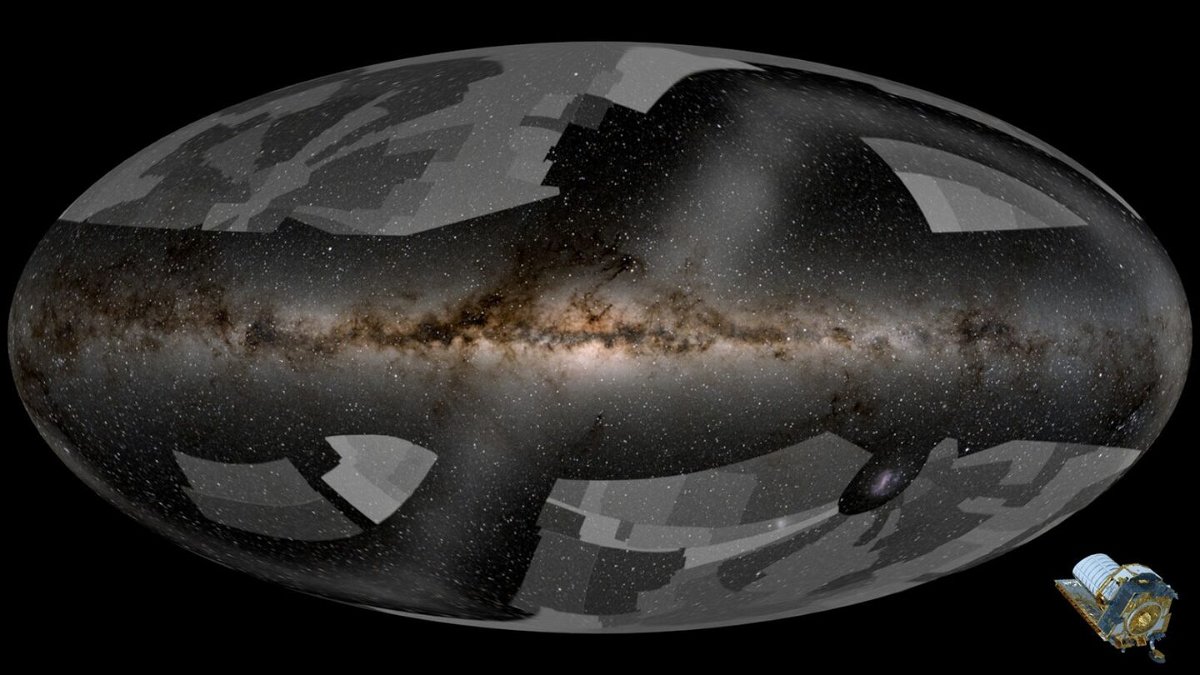A mission aiming to unravel the universe’s biggest mysteries has begun

Euclid will scan the night sky to form the largest cosmological survey ever conducted in visible and near-infrared light.
By Ashley Strickland, CNN
(CNN) — A mission designed to unravel some of the greatest mysteries of the universe has taken off.
The European Space Agency’s Euclid space telescope launched at 11:12 a.m. ET Saturday aboard a SpaceX Falcon 9 rocket from Florida’s Cape Canaveral Space Force Station.
Mission control received a signal from the telescope around 11:57 a.m. ET.
The 1.2-meter-diameter (4-foot-diameter) telescope has set off on a monthlong journey to its orbital destination of the sun-Earth Lagrange point L2, which is nearly 1 million miles (1.6 million kilometers) away from Earth and also home to NASA’s James Webb Space Telescope. Euclid will keep pace with Earth as our planet orbits the sun.
After arriving at orbit, Euclid will spend two months testing and calibrating its instruments — a visible light camera and a near-infrared camera/spectrometer — before surveying one-third of the sky for the next six years.
Investigating cosmic mysteries
Euclid’s primary goal is to observe the “dark side” of the universe, including dark matter and dark energy.
While dark matter has never actually been detected, it is believed to make up 85% of the total matter in the universe. Meanwhile, dark energy is a mysterious force thought to play a role in the accelerating expansion of the universe.
In the 1920s, astronomers Georges Lemaître and Edwin Hubble discovered that the universe has been expanding since its birth 13.8 billion years ago. But research that began in the 1990s has shown that something sparked an acceleration of the universe’s expansion about 6 billion years ago, and the cause remains a mystery.
Unlocking the true nature of dark energy and dark matter could help astronomers understand what the universe is made of, how its expansion has changed over time, and if there is more to understanding gravity than meets the eye. Both dark matter and dark energy also play a role in the distribution and movement of objects, such as galaxies and stars, across the cosmos.
Euclid is designed to create the largest and most accurate three-dimensional map of the universe, observing billions of galaxies that stretch 10 billion light-years away to reveal how matter may have been stretched and pulled apart by dark energy over time. These observations will effectively allow Euclid to see how the universe has evolved over the past 10 billion years.
The telescope was named in honor of Euclid of Alexandria, the Greek mathematician who lived around 300 BC and is considered the father of geometry. While primarily an ESA mission, the telescope includes contributions from NASA and more than 2,000 scientists across 13 European countries, the United States, Canada and Japan.
The telescope’s image quality will be four times sharper than those of ground-based sky surveys. Euclid’s wide perspective can also record data from a part of the sky 100 times bigger than what Webb’s camera can capture.
During its observations, the telescope will create a catalog of 1.5 billion galaxies and the stars within them, creating a treasure trove of data for astronomers that includes each galaxy’s shape, mass and number of stars created per year. Euclid’s ability to see in near-infrared light could also reveal previously unseen objects in our own Milky Way galaxy, such as brown dwarfs and ultra-cool stars.
A dynamic duo
In May 2027, Euclid will be joined in orbit by the Nancy Grace Roman Telescope. The two missions will overlap in their study of cosmic acceleration as they both create three-dimensional maps of the universe.
“Twenty-five years after its discovery, the universe’s accelerated expansion remains one of the most pressing mysteries in astrophysics,” said Jason Rhodes, a senior research scientist at NASA’s Jet Propulsion Laboratory in Pasadena, California, in a statement.
“With these upcoming telescopes, we will measure dark energy in different ways and with far more precision than previously achievable, opening up a new era of exploration into this mystery,” said Rhodes, who serves as the deputy project scientist for Roman and the US science lead for Euclid.
Roman will study one-twentieth of the sky in infrared light, allowing for much more depth and precision. The Roman telescope will peer back to when the universe was just 2 billion years old, picking out fainter galaxies than Euclid can see.
Roman also has the ability to hunt down rogue planets that aren’t attached to stars, search for exoplanets across our galaxy and study objects on the outskirts of our solar system.
“Together, Euclid and Roman will add up to much more than the sum of their parts,” said Yun Wang, a senior research scientist at the California Institute of Technology, in a statement. “Combining their observations will give astronomers a better sense of what’s actually going on in the universe.”
The-CNN-Wire
™ & © 2023 Cable News Network, Inc., a Warner Bros. Discovery Company. All rights reserved.
